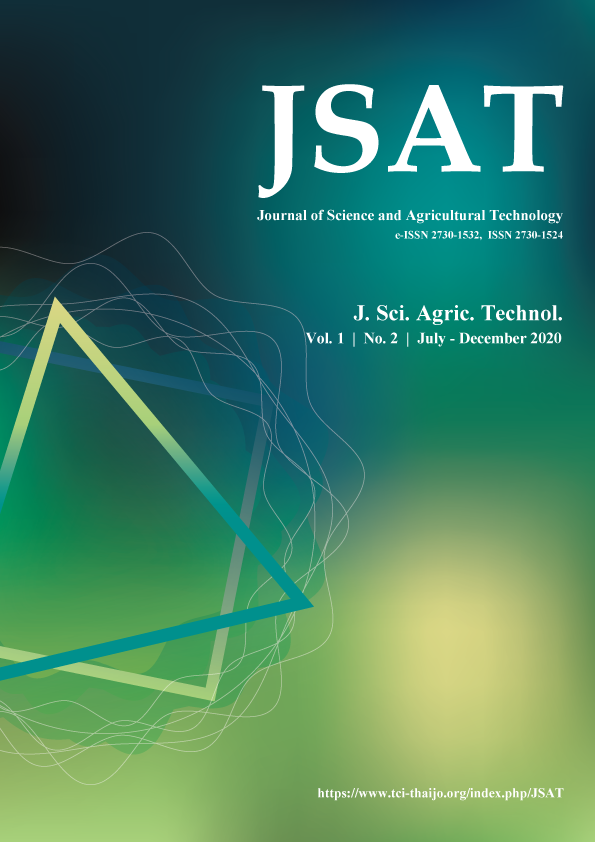Energy management study of aeration system for Nile tilapia fish pond using solar photovoltaic together with utility grid system
Main Article Content
Abstract
This paper presents the energy management models of the aeration system for the Nile tilapia pond using the electrical energy from solar photovoltaic (PV) and the utility grid system (Grid). The solar photovoltaic system is installed on nine panels in which each panel has a dimension of 2×1 m2 with 325 Wp of polycrystalline silicon solar cell type to produce the electricity for the aeration motor of 2.05 kW. In addition to using electric power, things to keep in mind are the Dissolved Oxygen (DO) that affects fish survival. In Nile tilapia aquaculture, the aeration phase is divided into 4 phases, in which each phase is determined into 4 models of energy management. The results for the period time of Phase 1, Phase 2, Phase 3, and Phase 4 are 66, 48, 14, and 20 days, respectively. Phase 1 uses the energy management model PV; electricity is used only during the daytime, and no use of the aerator at night time, so there is no effect on electricity saving. While other three Phases 2nd - 4th, the optimize energy management model is model 3, which uses the least electrical energy during the daytime from solar PV together with the utility grid system (solar PV&Grid) and at nighttime by using Grid system which the total energy consumptions are 19.21, 21.70, and 24.34 kWh/day, respectively. For one crop by choosing the energy management model can reduce the electrical energy consumption of 1,018.82 kWh/crop, and a total saving is 4,411.49 Baht/crop.
Article Details
References
AEDP.2015. Alternative energy development plan. Ministry of Energy, Thailand. Available from: https://www.dede.go.th/download/files/AEDP2015_Final_version.pdf. (in Thai).
Aziz, A.S., Tajuddin, M.F.N., Adzman, M.R., Mohammed, M.F., and Ramli, R.A.M. 2020. Feasibility analysis of grid-connected and islanded operation of a solar PV microgrid system: A case study. 191:69-82.
Choochote S. 1993. Freshwater fish farming. O. S. Printing House. Bangkok. 280 p. (in Thai).
Nalinanon, W., Lerdsuwan, S., and Heamasaton, T. 2017. Comparison of moving water and aeration fish cage with a standard fish cage for Nile tilapia (Oreochromis niloticus) Culture. J Sci Technol MSU. 36(4):486-491. (in Thai).
Phan-Van M., Rousseau, D., and De Pauw, N. 2008. Effects of fish bioturbation on the vertical distribution of water temperature and dissolved oxygen in a fish culture-integrated waste stabilization pond system in Vietnam. Aquaculture. 281:28-33.
Tran-Duy A., Schrama, J.W., Van Dam, A.A., and Verreth, J.A.J. 2008. Effects of oxygen concentration and body weight on maximum feed intake, growth and hematological parameters of Nile tilapia, Oreochromis niloticus. Aquaculture. 275:152–162.


